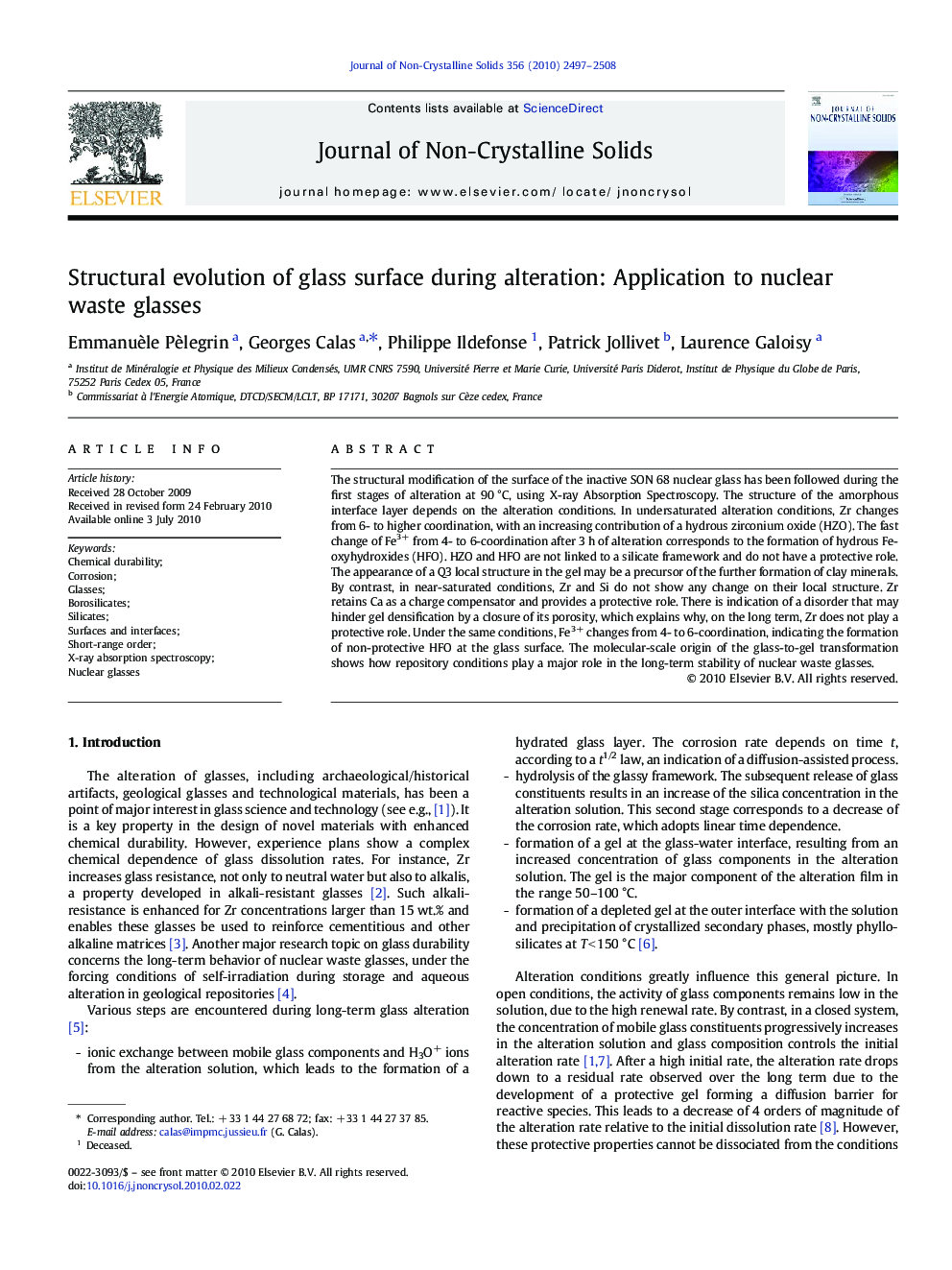| کد مقاله | کد نشریه | سال انتشار | مقاله انگلیسی | نسخه تمام متن |
|---|---|---|---|---|
| 1482781 | 1510488 | 2010 | 12 صفحه PDF | دانلود رایگان |

The structural modification of the surface of the inactive SON 68 nuclear glass has been followed during the first stages of alteration at 90 °C, using X-ray Absorption Spectroscopy. The structure of the amorphous interface layer depends on the alteration conditions. In undersaturated alteration conditions, Zr changes from 6- to higher coordination, with an increasing contribution of a hydrous zirconium oxide (HZO). The fast change of Fe3+ from 4- to 6-coordination after 3 h of alteration corresponds to the formation of hydrous Fe-oxyhydroxides (HFO). HZO and HFO are not linked to a silicate framework and do not have a protective role. The appearance of a Q3 local structure in the gel may be a precursor of the further formation of clay minerals. By contrast, in near-saturated conditions, Zr and Si do not show any change on their local structure. Zr retains Ca as a charge compensator and provides a protective role. There is indication of a disorder that may hinder gel densification by a closure of its porosity, which explains why, on the long term, Zr does not play a protective role. Under the same conditions, Fe3+ changes from 4- to 6-coordination, indicating the formation of non-protective HFO at the glass surface. The molecular-scale origin of the glass-to-gel transformation shows how repository conditions play a major role in the long-term stability of nuclear waste glasses.
Journal: Journal of Non-Crystalline Solids - Volume 356, Issues 44–49, 1 October 2010, Pages 2497–2508